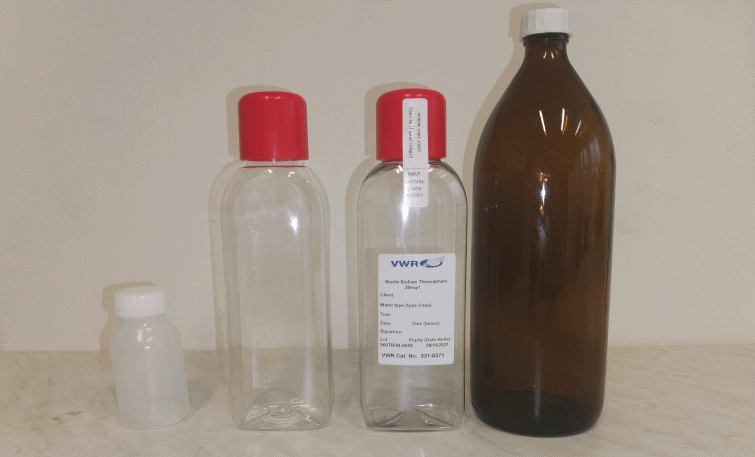It is easy.
- Firstly, it is recommended to think about where you use water the most (water tap or directly from well etc.). If you want to know what you drink, it is necessary to take water samples directly from the water taps so the samples include potential external influences from the plumbing system in the house.
- If you haven't used your well for a longer period of time (e.g. after winter) it is recommended to drain the water from the well three times of its volume, then let the well fill up again and take the samples.
- Before taking the samples let the water run for at least 5 minutes.
- Make sure your you keep the samples as sterile as possible so any potential uncleanliness (e.g. from your hands) does not contamine the samples. Hold the sampling set so the water doesn't run over your fingers.
- Prepare all the bottles so you have them handy while collecting the samples.
Water sampling for determination of chemical indicators and heavy metals
Use 500 ml plastic sampling bottle (for the chemical indicators), rinse it three times with the water tested (including the lid.) Then fill it up and close it.
If you have the 100 ml bottle (for the heavy metals), proceed the same way as described above.
Water sampling for the determination of bacteriological indicators
Use a special sterilized plastic sampling bottle which you picked up at our laboratory. Open the bottle just before collecting the sample.The sampling bottle is provided with a seal with its minimum shelf life mark. Open the bottle and fill it up with water. Do not rinse it before! Hold the lid facing up in your other hand the whole time so it does not contaminated, if you sneezed or coughed for example.
Do not fill the whole bottle up. Leave approximately 2 cm below the throat empty so there is enough air for the bacteria.
Water sampling for the determination of pesticides
Use a 1 liter brown glass sampling bottle. Rinse it three times (the lid included) with the water tested. Fill it up and close it.
Delivering the samples to the laboratory
If you can't deliver the samples to the laboratory immediately after collecting the samples, make sure to keep the samples in cold. They must not be left in the sun.
It is necessary to deliver the samples to our laboratory as soon after the collecting as possible, at the latest 24 hours after collecting. (Due to the influences of microbiology).
Handover protocol
If you want to, you can prepare the handover protocol at home or you can pick it up together with the sampling sets at our laboratory.







